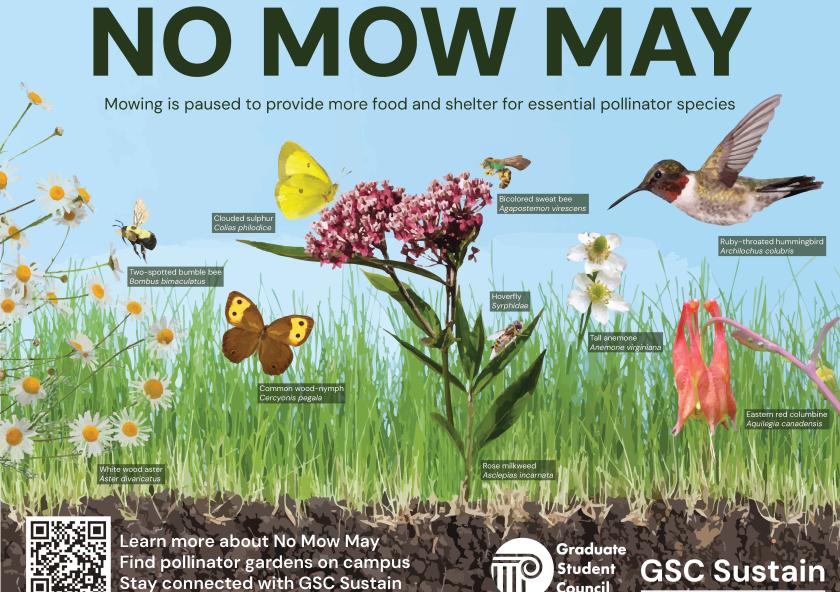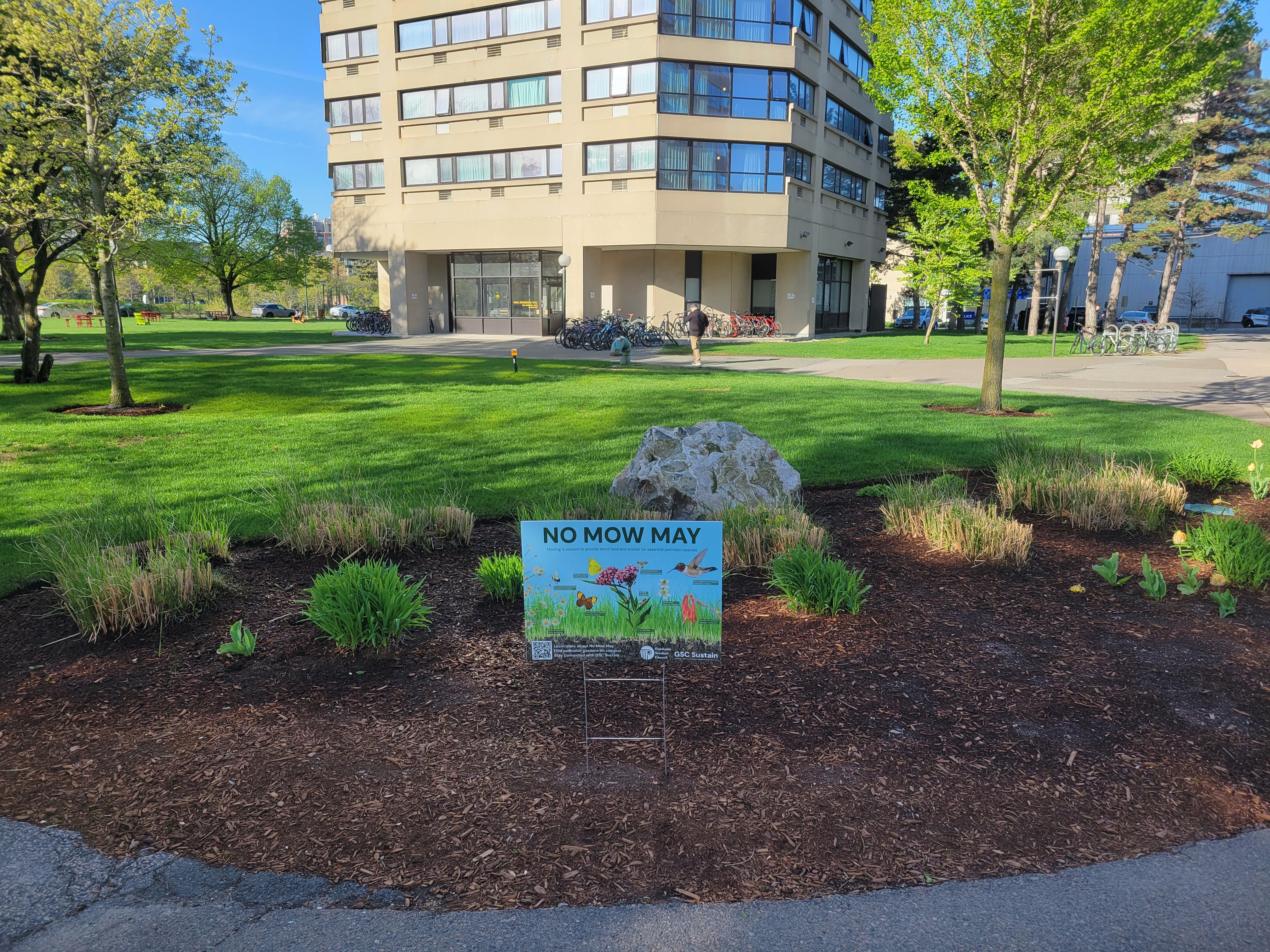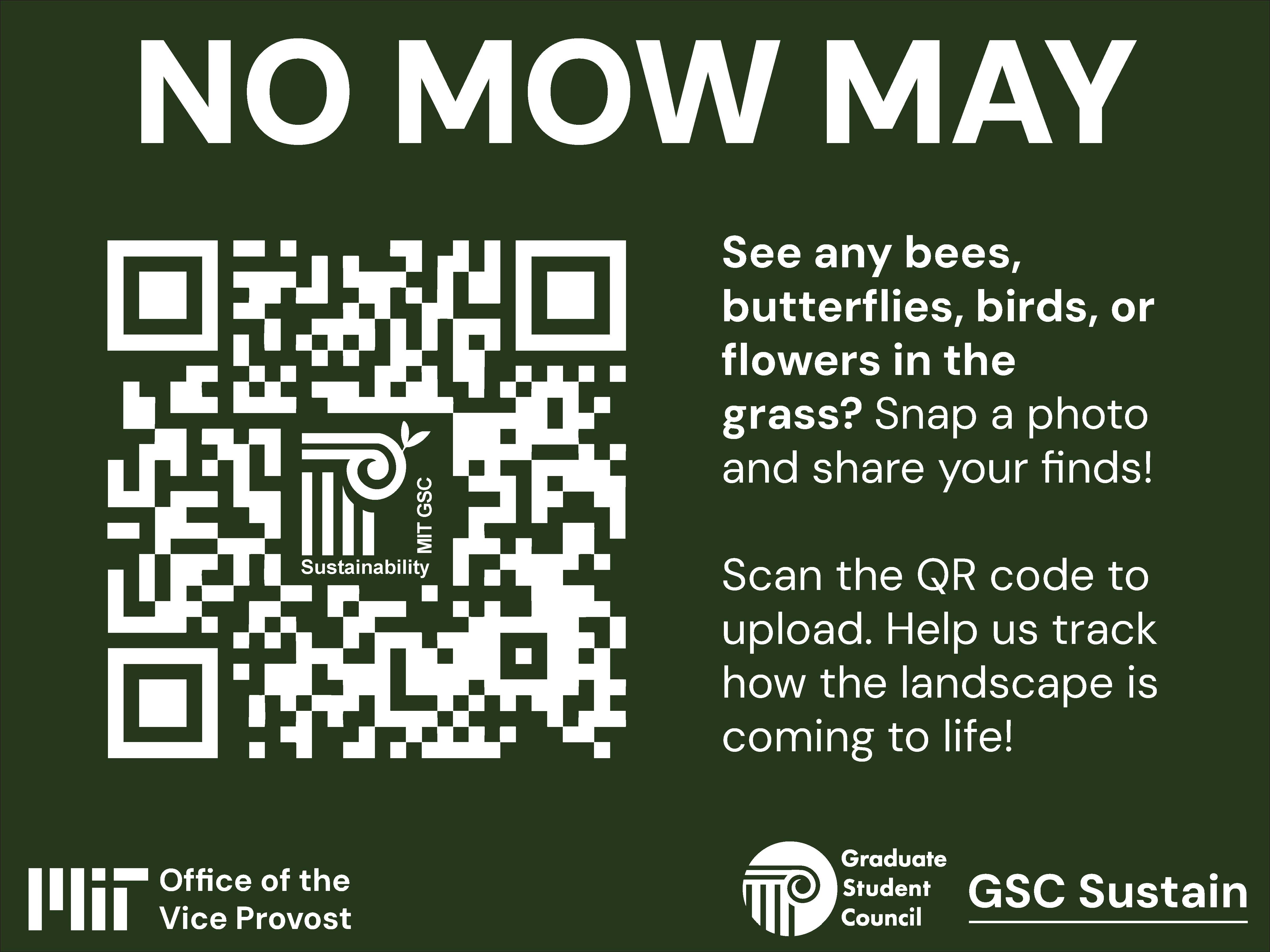
Led by GSC Sustain, MIT kicks off first “No Mow May”

In recent years, some grass lawns around the country have grown a little taller in springtime thanks to No Mow May, a movement (originally launched by UK nonprofit Plantlife in 2019) designed to raise awareness about the ecological impacts of traditional, resource-intensive manicured grass lawn. No Mow May encourages people to skip spring mowing to allow for grass to grow tall and provide food and shelter for beneficial creatures including bees, beetles, and other pollinators. This year, MIT is taking part in the practice for the first time, with portions of the Kendall/MIT Open Space, Bexley Garden, and the Tang Courtyard selected to forgo mowing from May 1 through June 6 to make space for local pollinators, decrease water use, and encourage new thinking about the traditional lawn. MIT’s first No Mow May is the result of championing by the Graduate Student Council Sustainability Subcommittee (GSC Sustain) and made possible by the Office of the Vice Provost for Campus Space Management and Planning.
A student idea sprouts
Despite being a dense urban campus, MIT has no shortage of green spaces—from pocket gardens and community-managed vegetable plots to thousands of shade trees—and interest in these spaces continues to grow. In recent years, student-led initiatives supported by Institute leadership and operational staff have transformed portions of campus by increasing the number of native pollinator plants and expanding community gardens, like the Hive Garden. With No Mow May, these efforts step out of the garden and into MIT’s many grassy open spaces. “The idea behind it is to raise awareness for more sustainable and earth-friendly lawn practices,” explains Gianmarco Terrones, GSC Sustain member. Those practices include reducing the burden of mowing, limiting use of fertilizers, and providing shelter and food for pollinators. “The insects that live in these spaces are incredibly important in terms of pollination, but they’re also part of the food chain for a lot of animals,” says Terrones.
Research has shown that holding off on mowing in spring, even in small swaths of green space, can have an impact. The early months of spring have the lowest number of flowers in regions like New England, and providing a resource and refuge—even for a short duration—can support fragile pollinators like bees. Additionally, No Mow May aims to help people rethink their yards and practices, which are not always beneficial for local ecosystems. Signage at each No Mow site on campus highlights information on local pollinators, the impact of the project, and questions for visitors to ask themselves. “Having an active sign there to tell people, ‘Look around. How many butterflies do you see after six weeks of not mowing? Do you see more? Do you see more bees?’ can cause subtle shifts in people's awareness of ecosystems,” says GSC Sustain member Mingrou Xie. A mowed barrier around each project also helps visitors know that areas of tall grass at No Mow sites are intentional.
Campus partners bring sustainable practices to life
To make MIT’s No Mow May possible, GSC Sustain members worked with the Office of the Vice Provost and the Open Space Working Group, co-chaired by Vice Provost for Campus Space Management and Planning Brent Ryan and Director of Sustainability Julie Newman. The Working Group, which also includes staff from Open Space Programming, Campus Planning, and faculty in the School of Architecture and Planning, helped to identify potential No Mow locations and develop strategies for educational signage and any needed maintenance. “Massachusetts is a biodiverse state, and No Mow May provides an exciting opportunity for MIT to support that biodiversity on its own campus,” says Ryan.
Students were eager for space on campus with high visibility, and the chosen locations of the Kendall/MIT Open Space, Bexley Garden, and the Tang Courtyard fit the bill. “We want to set an example and empower the community to feel like they can make a positive change to an environment they spend so much time in,” says Xie. For GSC Sustain, that positive change also takes the form of the Native Plant Project, which they launched in 2022 to increase the number of Massachusetts-native pollinator plants on campus, plants like swamp milkweed, zigzag goldenrod, big leaf aster, and red columbine with which native pollinators have coevolved. Partnering with the Open Space Working Group, GSC is currently focused on two locations for new native plant gardens—the President’s Garden and the terrace gardens at the E37 Graduate Residence. “Our short-term goal is to increase the number of native [plants] on campus, but long term we want to foster a community of students and staff interested in supporting sustainable urban gardening,” says Xie.

No Mow May and the Native Plant Project fit into MIT’s overall focus on creating resilient ecosystems that support and protect the MIT community and the beneficial critters that call it home. MIT Grounds Services has long included native plants in the mix of what is grown on campus and native pollinator gardens, like the Hive Garden, have been developed and cared for through partnerships with students and Grounds Services in recent years. Grounds, along with consultants that design and install our campus landscape projects, strive to select plants that assist us with meeting sustainability goals, like helping with stormwater run-off and cooling. No Mow May can provide one more data point for the iterative process of choosing the best plants and practices for a unique microclimate like the MIT campus.
“We are always looking for new ways to use our campus as a testbed for sustainability,” says MIT Director of Sustainability Julie Newman. “Community-led projects like No Mow May help us to learn more about our campus and share those lessons with the larger community.”

Staff, students, and community members came together to support MIT's first No Mow May and the Native Plant Project. GSC Sustain would like to recognize some of the people who supported these projects including: Brittany Hutchinson and Zachary Rapaport in the Office of the Vice Provost as well as postdoc Rishabh Datta, research scientist Barbie Duckworth, research assistant Ethan D'Orio and graduate students Marta Faulkner, Amanda Mackie, Shon Mackie, David Mazumder, Omar Tantawi, Gianmarco Terrones, and Mingrou Xie.

